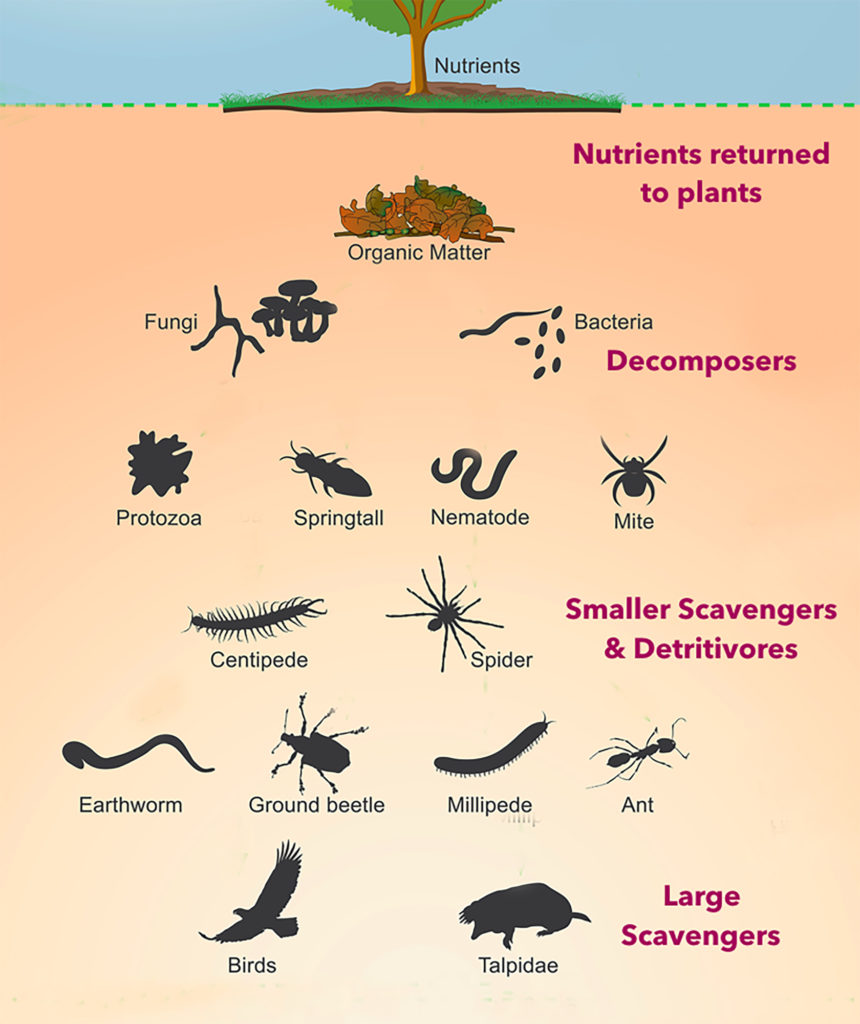
Soils Composition & Significance


Soils Objectives:
- List the three basic components of topsoil.
- Describe the composition and characteristics of different soil types.
- Provide examples of organisms commonly found in soil food webs.
Earlier in the course we explored compost, including the role of detritivores & decomposers in producing soil from the remains of organisms. In this section we focus on soil composition.
Soil is comprised of multiple layers.

Topsoil, like it sounds, is on top of other deeper layers. Topsoil has the most interactions with wind, water, and organisms. This is what we see and and frequently interact with in the garden.
This video introduces topsoil.
Topsoil is comprised of three components: minerals, organic matter (the remains of organisms), and living soil organisms.


You may have heard of “clay” and “sandy” soil or experienced them first-hand. There are many names for soils, this video introduced some of the more common types. Consider what you could do to improve each of the soil types for gardening. What would you add to improve plant growth.
You may have a local soil that is unique because it has a higher concentration of a specific mineral. In the Willamette Valley, we have a soil that tells a history of the valley’s formation.
Soil Organisms
Organisms are part of topsoil, and are their decomposing remains. One of the easiest was to improve or “amend” soil for gardening or larger agricultural use is to add compost.

Soil organisms are critical in breaking the remains of other organisms into nutrients that can return to producers and reenter the food web.



When many people thing of soil organisms, earthworms pop into the mind. Earthworm species are detritivores that move through soil, increasing aeration (oxygen availability) and soil fertility (available nutrients). Earthworms are also an important food for many species.
Earthworms are more structurally complex than many people realize. The castings (scat) produced by their digestive tract are a form of fertilizer.
Millipedes are arthropod detritivores, and although some species are small, some are quite large. They are increasingly popular as pets. A note is that some release a caustic and toxic substance when startled, so always wash your hands after handling.
Just in time for this module, our soil decomposers are popping up reproductive structures all over.These are most likely Amanita muscaria, they are pretty common here and often grow at the base of trees.
This is the end of Guide 8A. Please proceed to the products page.

Check your knowledge. Can you:
- List the three basic components of topsoil?
- Describe the composition and characteristics of different soil types?
- Provide examples of organisms commonly found in soil food webs?



